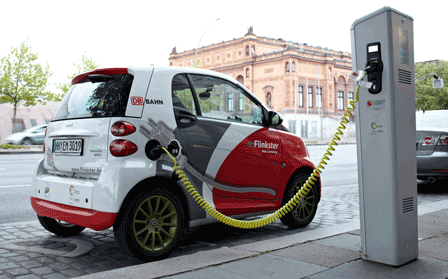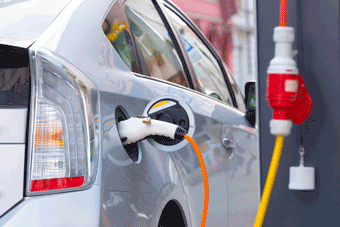What are the benefits of electric vehicles? The answer to this question has many layers. Given that about 90 per cent of the Aussie population commutes less than 100km each day, it’s just right to conclude that electric cars are indeed viable and convenient in the land down under. According to BMW’s spokeswoman Lenore Fletcher, electric vehicles’ craze around the globe is growing and Australia is no exception.

“Electric vehicles have attracted a great deal of interest and awareness regarding the sustainability question in multiple countries around the world and 18,000 BMW I vehicles were delivered internationally in 2014,” Fletcher said.
There is a wide spectrum of benefits of electric vehicles, especially when compared to the typical internal combustion engine (ICE) cars. Some of the benefits of electrice vehicles include:
- Higher efficiency
- Lower operating costs
- Lower maintenance costs
- Reduced traffic noise
- Reduced Greenhouse gas emission
- Air quality improvements
- Enhanced comfort and convenience
- Feels like any other car when driving
- Less vibration while driving
- Exempted from stamp-duty
- Reduced registration fees
- Employment opportunities through locally produced electricity
We talked to Ian Hooper of ZEVA about the various benefits of electric vehicles. Compared to petrol-powered vehicles, electric vehicles have more advantages whether on a personal, national or global scale.
On a personal level, an electric car owner has numerous advantages and this could just explain the increase in electric vehicles sold in Australia. In 2014, 1130 EVs were sold in Australia out of which 321 were bought by private buyers. This number increased compared to 292 cars sold to private buyers in 2013. The costs of running an electric vehicle are much lower. The level of electricity used to power an EV operates using about a third as much for each kilometre as buying petrol for a similar vehicle. The car’s maintenance costs are also very low since the vehicle’s electric motor needs virtually no servicing over its lifespan. However, just like any other vehicle, some minor maintenance is required for various parts of the car such as brakes, tires and suspensions.
At the national level, EVs can really boost Australia’s energy security. Currently, Australia depends on other countries for its petroleum imports. Electric vehicles are viable and can easily be powered locally from the country’s energy sources, thus reducing over-dependence on external oil sources.
With zero drive-time emissions, electric vehicles are a bit friendlier to the environment as they reduce air pollution. In terms of pollution, Australia isn’t too bad compared to other countries around the world notably China where poor air quality poses serious health complications.
How will Electric Vehicles integrate into Australia’s existing car industry?
It is also worth noting that, compared to other countries like USA and Japan, Australia has not done much in encouraging its people to purchase electric vehicles. This is according to Peter Fadeyev, Nissan’s spokesman when he said, “Countries such as the USA and Japan are well ahead of Australia when it comes to providing the infrastructure and incentives to encourage people to buy electric vehicles and this situation needs to change in Australia.”
There are various hurdles that inhibit the adoption of EVs in Australia. The high initial price of EVs, lack of infrastructure like recharging stations and lack of government subsidies to help offset the high cost are some of the unique challenges faced by Australia.
When comparing Australia to other countries like Japan and USA, Fletcher states that, “The administrations of these international countries have supported the awareness of alternative fuel and low emission vehicles by providing tax relief and a range of incentives for potential owners. Unfortunately, that has not been the case in Australia.”
On the global scene, the heavy dependence on coal and gas fired stations to generate power has been the biggest handicap. Power from our wall sockets is generated from substances that emit huge levels of CO2 than burnt liquefied fossil fuel.
In most cases, global “green power” electricity strategies entail planting trees to help offset increased CO2 emissions. Though necessary, a long-term proposition is vital and manufacture of electric vehicles is one such plan. Electric vehicles enhance reduction of CO2 emissions which is often associated with climate change, which is this century’s greatest humanity challenge.
In Western Australia for instance, electricity is generated mainly from coal and charging EVs from regular power sockets would mean intensive CO2 emissions just like regular petrol-powered vehicles. However, with more efficient renewable energy introduction to the grid in future, and as Green power options like lithium-ion batteries and solar panels become more available, charging the vehicle will produce zero CO2 emissions.
Environmental Benefits of Electric Vehicles
There’s no doubt that electric vehicles using renewable energy have significantly reduced in overall the long-term greenhouse gas emissions. Combining ingenious electric vehicle technology, EVs deliver zero tailpipe emissions making them the most environmentally friendly sedans.
Even though the EV production and disposal is relatively small at the moment, the trend to use eco-friendly materials and production procedures of the cars will help plug into the future today. The findings of a paper released by the Department of Transport in 2012 revealed that within a span of three years of operation, an electric vehicle running on renewable energy could provide vast net benefits of electric vehicles in terms of the total lifecycle carbon emissions. This would save over 50 per cent given a 20 year average of a Victorian vehicle lifetime. The report further concluded that approximately 6 battery replacements would be necessary during a vehicle’s life before losing the greenhouse benefits to a petrol vehicle.
For instance, the Ford Focus Electric car is rated as the most fuel efficient car saving up to $9,000 in just 5 years. The Ford Focus doesn’t just reduce greenhouse gas emissions but also uses recycled materials to design it as well as bio based material to make its padding. Likewise, the Nissan LEAF’s partly uses green materials like plastic bags, water bottles, second-hand home appliances and old car parts to make the car’s interior and bodywork.
How Far Can Electric Cars Travel?

The Australian Electric Vehicle Association gives some pointers on this— based on how you drive and the existing conditions, your range is likely to vary. For instance, sustained high speeds, long mountain climbs, three passengers and luggage as well as strong headwinds are all situations that will reduce the car’s economy and consequently the range.
This is just the same way it happens with petrol vehicles. However, tailwinds and long descents will hugely enhance your range.
The ‘fuel’ economy of an electric car that uses a battery is usually quoted in watt-hours per kilometre (Wh/km). On average, a compact EV a fuel economy of 135 Wh/km. PHEVs on the other hand will first have a moderate electric-only range of 50 to 100 km, before the petrol engine can kick in. Because of the additional weight and complexity, the PHEV’s electric-only range will generally be poorer than that of a pure EV, but will still reserve a lot for most daily needs.
Below is a breakdown of the estimate range for the top 10 EVs on the market:
| Tesla Model S | 500 km |
| BEV Electron | 120 km |
| Nissan Leaf | 170 km |
| Mitsubishi i-MiEV | 99 km |
| Ford Focus Electric | 122 km |
| Honda Fit | 132 km |
| Chevrolet Spark | 132 km |
| Kia Soul | 148 km |
| BMW i3 | 160 km-300 km with range extender option that uses petrol |
| Holden Volt | 87 km without petrol / 600 km with full charge and petrol generator |
Electric vehicle ranges are getting more innovative by the day as newer models keep hitting the market. The Nissan Leaf is a next-gen car that can deliver 300 km on a single charge. However since most Australian motorists drive about 35 – 70 km each day and EVs have an average range of approximately 100 – 150 km, electric vehicles are definitely a viable option for most drivers.
For longer distances, quick electric charge and swap-and-go battery exchange stations are becoming more readily available all across Australia. Tesla’s recent announcement to launch 16 high-powered supercharger stations from Melbourne to Brisbane by 2016, and 10 of which are poised for completion this year, electric car travel will certainly be fun, fast and convenient.